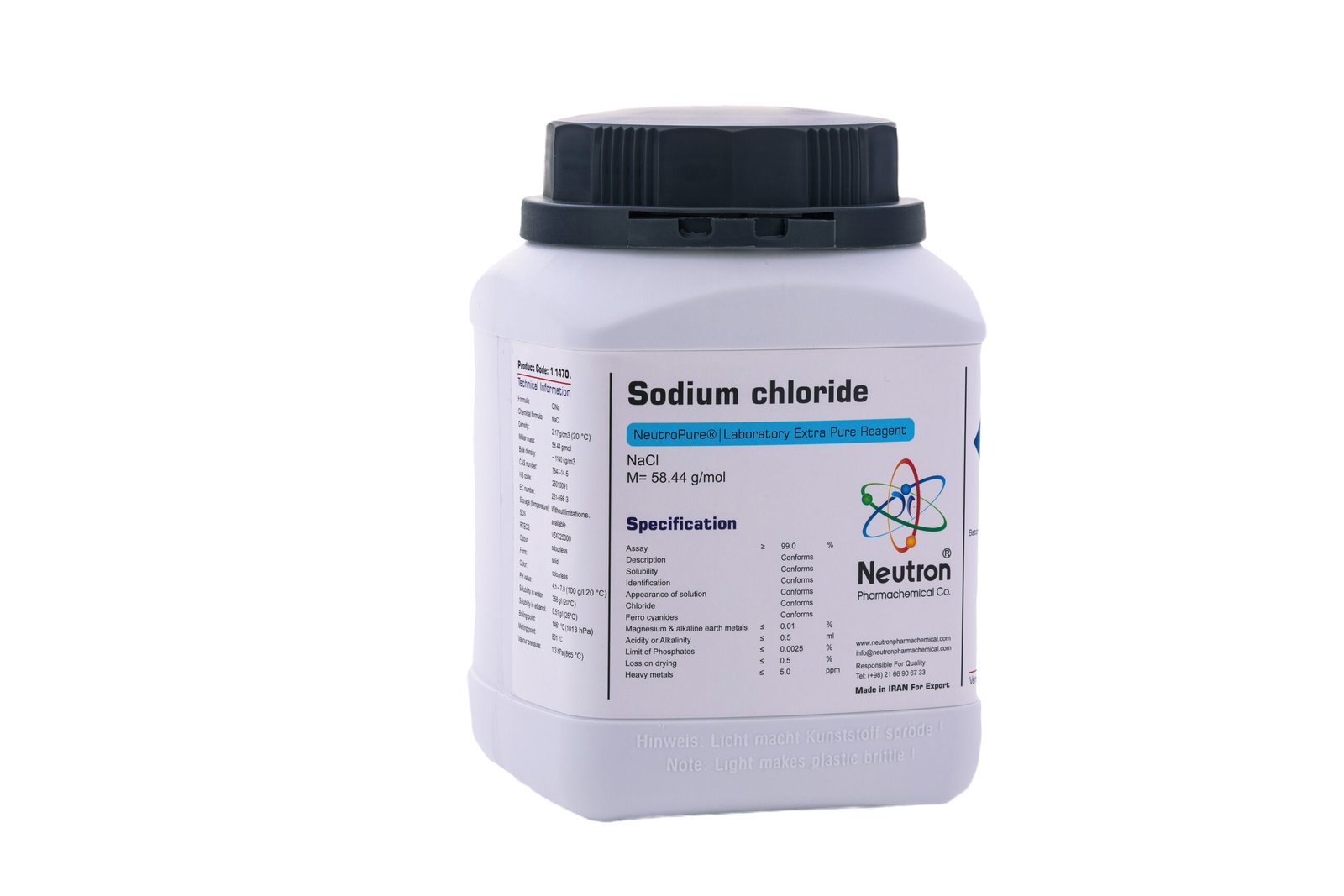سدیم کلراید
| Formula: | CINa |
| Chemical formula: | NaCl |
| Density: | 2.17 g/cm3 (20 °C) |
| Molar mass: | 58.44 g/mol |
| Bulk density: | ~ 1140 kg/m3 |
| CAS number: | 7647-14-5 |
| HS code: | 25010091 |
| EC number: | 231-598-3 |
| Storage (temperature): | Without limitations. |
| SDS | available |
| RTECS: | VZ4725000 |
| Odour: | odourless |
| Form: | solid |
| Color: | colourless |
| PH value: | 4.5 – 7.0 (100 g/l 20 °C) |
| Solubility in water: | 358 g/l (20°C) |
| Solubility in ethanol: | 0.51 g/l (25°C) |
| Boiling point: | 1461 °C (1013 hPa) |
| Melting point: | 801 °C |
| Vapour pressure: | 1.3 hPa (865 °C) |
| Assay | ≥ | 99 | % |
| Description | Conforms | ||
| Solubility | Conforms | ||
| Identification | Conforms | ||
| Appearance of solution | Conforms | ||
| Chloride | Conforms | ||
| Ferro cyanides | Conforms | ||
| Magnesium & alkaline earth metals | ≤ | 0.01 | % |
| Acidity or Alkalinity | ≤ | 0.5 | ml |
| Limit of Phosphates | ≤ | 0.0025 | % |
| Loss on drying | ≤ | 0.5 | % |
| Heavy metals | ≤ | 5 | ppm |
Sodium chloride (NaCl), commonly known as table salt, is an ionic compound consisting of sodium and chloride ions. It appears as colorless or white crystalline solid and is widely used in food, industry, and medicine.
🏭⚗️ Production
Sodium chloride is produced primarily by mining rock salt or by evaporating seawater and salt lakes. It can also be synthesized through chemical reactions such as the neutralization of hydrochloric acid with sodium hydroxide.
🔬 Properties
Sodium chloride forms colorless cubic crystals that are odorless and have a salty taste. It has a melting point of 801°C and is highly soluble in water, dissociating completely into sodium and chloride ions. It is electrically conductive in molten or aqueous state but is solid and non-conductive at room temperature.
🧪 Applications
• Food industry: Used as a seasoning, preservative, and in food processing.
• Chemical industry: Serves as a raw material in the production of chlorine, sodium hydroxide, and other chemicals.
• Medical: Used in saline solutions for intravenous therapy and wound cleaning.
• De-icing: Applied to roads and walkways to melt ice during winter.
• Water treatment: Used in water softening processes.




